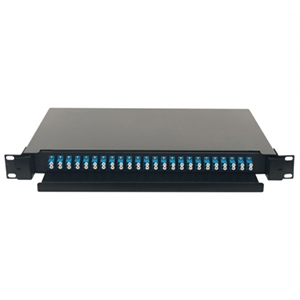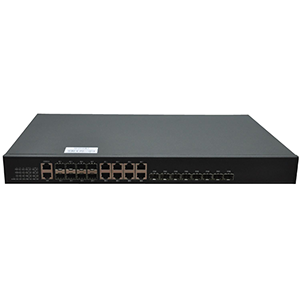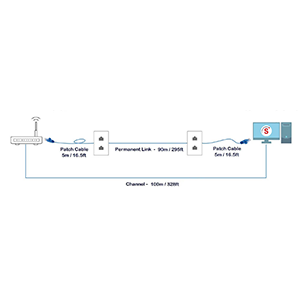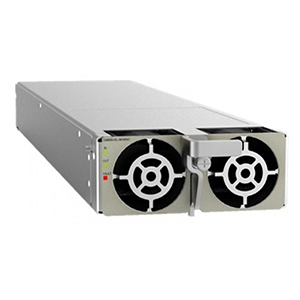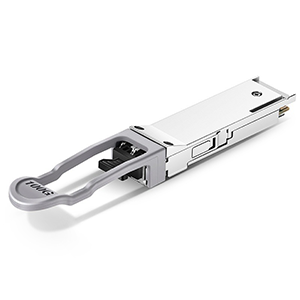Thank you for choosing to read this article. Today I will introduce you to fiber optic GBIC and its important role in fiber optic communications. The fiber optic GBIC is a fiber optic interface converter that provides critical functionality and flexibility for fiber optic communications.
Overview of fiber optic GBIC
Optical fiber GBIC (Gigabit Interface Converter) is an optical fiber interface module used to realize interface conversion and connection between different types of optical fibers in optical fiber communications. It is a pluggable module that can be installed and replaced on the fiber optic ports of fiber optic equipment such as switches, routers, and servers.
Optical fiber GBIC plays an important role in optical fiber communication, mainly in the following aspects:
-
Interface conversion: Fiber GBIC can convert different types of fiber interfaces to each other, such as converting multi-mode fiber interfaces to single-mode fiber interfaces, or converting interfaces under different transmission distance requirements. This makes it easy to connect different types of fiber optic equipment and achieve flexible fiber optic network layout.
-
Scalability and upgradeability: The pluggable design of fiber optic GBIC makes the interface of fiber optic equipment expandable and upgradeable. By replacing the fiber optic GBIC module, you can easily upgrade the interface type of the device or increase the number of interfaces without replacing the entire device.
-
Flexibility and interoperability: The adoption of fiber optic GBIC makes fiber optic equipment more flexible and interoperable. Equipment from different manufacturers can use standard optical fiber GBIC interfaces to achieve interconnection without being restricted by specific equipment interfaces.
To sum up, the optical fiber GBIC, as an optical fiber interface converter, plays an important role in optical fiber communications. It provides interface conversion, scalability, flexibility and interoperability, and is widely used in data centers, remote offices, enterprise networks and telecom operators.
Function and characteristics of fiber optic GBIC
Fiber optic GBIC (Gigabit Interface Converter) is a fiber optic interface module with the following basic functions:
-
Convert electrical signals to optical signals: Fiber optic GBIC can convert electrical signals transmitted through cables into optical signals. It contains an electro-optical converter (Transmitter) inside, which converts electrical signals into optical signals suitable for transmission in optical fibers. This can take advantage of the low loss and high bandwidth characteristics of optical fiber to achieve high-speed data transmission.
-
Convert optical signals into electrical signals: Fiber optic GBIC can also convert optical signals transmitted through optical fibers into electrical signals. It contains an optical-to-electrical converter (Receiver) inside, which converts the received optical signal into an electrical signal for processing and decoding in the receiving device.
Fiber GBIC has the following characteristics:
-
Support multiple fiber interface types: Fiber GBIC can support multiple fiber interface types, including multi-mode fiber (such as MMF) and single-mode fiber (such as SMF). This makes fiber optic GBIC suitable for different types of fiber optic networks and can be interconnected with fiber optic equipment of different specifications.
-
Support different transmission distances: Fiber optic GBIC can support different transmission distance requirements, ranging from hundreds of meters to dozens of kilometers. This is achieved by selecting the appropriate transmission medium and fiber type. For example, for short-distance transmission, multimode fiber and fiber GBIC can be used to achieve cost-effective solutions; while for long-distance transmission, single-mode fiber and fiber GBIC can be used to achieve higher transmission performance.
-
Pluggable design: The fiber optic GBIC adopts a pluggable design, making it easy to install, replace and upgrade. By simply plugging and unplugging the fiber optic GBIC module, the type and number of interfaces of the fiber optic equipment can be flexibly configured without replacing the entire equipment.
-
Standardized interface: Fiber optic GBIC adopts standardized interface, such as SC, LC or SFP interface. This allows fiber optic equipment from different manufacturers to use compatible fiber optic GBIC modules to achieve interconnection and improve equipment interoperability.
In short, fiber optic GBIC has the basic function of converting electrical signals into optical signals and optical signals into electrical signals. Its features include support for multiple fiber optic interface types and transmission distances, pluggable design, and standardized interfaces, making it widely applicable and flexible in fiber optic communications.
Application scenarios of optical fiber GBIC
Fiber optic GBIC (Gigabit Interface Converter) has a wide range of application scenarios in fiber optic communications and can be used in various network equipment, including but not limited to the following aspects:
-
Switch: Optical fiber GBIC can be used to connect the optical fiber port of the switch to realize interface conversion and connection between different types of optical fibers. It can be used to connect optical fiber links between switches, expand the number of interfaces of the switch or convert multi-mode optical fiber interfaces to single-mode optical fiber interfaces to adapt to different distance requirements.
-
Router: Fiber optic GBIC can be used in the fiber optic interface of the router to realize the connection between different types of optical fibers. It can be used to connect fiber links between routers and other network devices, expand the number of router interfaces or convert different fiber interface types.
-
Servers: For servers that require high-speed data transmission and reliable connections, fiber optic GBIC can be used to connect fiber optic links between servers and switches or other network devices. By using fiber optic GBIC, high-speed, low-latency data transmission can be achieved, improving server performance and reliability.
-
Data center: In large data centers, fiber optic GBIC is widely used to connect various fiber optic equipment, such as servers, storage devices and network switches. It can be used to build optical fiber interconnection networks in data centers to achieve high-bandwidth, low-latency data transmission and support the high-density and high-availability requirements of data centers.
The application of optical fiber GBIC is not limited to the above-mentioned equipment. It can be applied to other scenarios that require optical fiber interface conversion and connection. In general, optical fiber GBIC plays an important role in building flexible and scalable optical fiber networks. It provides interface conversion, scalability and interoperability, allowing different types of optical fiber equipment to be flexibly connected and interoperable to meet the changes and expansion of different network requirements.
Selection and deployment recommendations for fiber optic GBIC
When selecting and deploying a fiber-optic GBIC (Gigabit Interface Converter), here are some recommendations and best practices:
Guidance on selecting fiber optic GBIC:
-
Network requirements: First, consider the network requirements, including bandwidth requirements, transmission distance, network topology, etc. Determine the type of optical fiber interface that needs to be supported (such as multi-mode optical fiber or single-mode optical fiber) and the transmission distance range to meet the requirements of the network.
-
Fiber optic interface type: Select the appropriate fiber optic interface type according to network requirements. Multimode fiber is suitable for short-distance transmission, while single-mode fiber is suitable for long-distance transmission. Make sure that the selected optical fiber GBIC is compatible with other devices in the network to ensure the interconnectivity of the interface.
-
Compatibility: Consider the compatibility of fiber optic GBIC. Make sure that the optional optical fiber GBIC is compatible with the optical fiber interface of the network device and complies with relevant standards and specifications to ensure interoperability between devices.
Recommendations for fiber optic GBIC deployment:
-
Physical installation: When installing fiber optic GBIC, please ensure that the device is powered off. Before inserting the fiber optic GBIC, check the cleanliness and integrity of the fiber optic GBIC slot. Correctly align the slots of the fiber optic GBIC and insert it gently. Make sure it is inserted securely, but do not use too much force to avoid damaging the device.
-
Optical fiber connection: When connecting the optical fiber, pay attention to the cleanliness and integrity of the optical fiber. Use appropriate fiber optic connectors (such as SC, LC, etc.) and fiber optic attenuators (if required). Make sure the fiber connection is secure and avoid bending or stretching the fiber to reduce the risk of optical signal loss and transmission failure.
-
Configuration settings: After deploying fiber optic GBIC, make relevant configuration settings according to the requirements of the network equipment. This may include specifying parameters such as speed, protocol, working mode, etc. of the optical fiber interface. Make sure the configuration matches the settings of other devices on the network to ensure proper data transfer and communication.
-
Testing and monitoring: After the deployment is completed, test and monitor the fiber link. Use fiber optic testing instruments to test fiber optic links to ensure signal quality and connection reliability. Regularly monitor the performance and status of fiber optic links, as well as the working status of fiber optic GBIC, and promptly discover and solve any problems.
To sum up, factors such as network requirements, fiber optic interface type and compatibility should be considered when selecting fiber optic GBIC. When deploying fiber GBIC, pay attention to best practices such as physical installation, fiber connections, and configuration settings to ensure the stability and performance of the fiber network. Regular testing and monitoring of fiber optic links, as well as maintaining the working status of fiber optic GBICs, are important steps to ensure the normal operation of fiber optic networks.
Development Trend of Optical Fiber GBIC
Fiber optic GBIC (Gigabit Interface Converter) is an important component in the field of fiber optic communications. Generally speaking, the future development trend of fiber optic GBIC includes higher speed, smaller size and lower power consumption designs. As fiber optic technology continues to advance and network demands grow, fiber optic GBIC will continue to play an important role in building high-speed, reliable fiber optic networks and integrate with emerging fiber optic technologies and network needs.
Summarize:
In the future, fiber-optic GBICs will continue to develop to achieve higher speeds, smaller sizes, and lower power consumption. At the same time, the combination of optical fiber GBIC with emerging optical fiber technologies, such as the needs of optical fiber switches and data centers, will further promote its development and application.
If you are interested in fiber optic GBIC, please consider contacting us, we will provide you with professional advice and support to help you choose the fiber optic GBIC solution that suits your needs and achieve efficient and reliable fiber optic communications.
- What is a fiber GBIC?
- What is SFP vs GBICs?
- What is SFP in fiber optic?
- What is the difference between SFP+ and mini GBIC?
- What is purpose of a GBIC?
- What is the function of GBIC?
- Are Gbics still used?
- Does SFP replace GBIC?
- Is SFP only for fiber?


